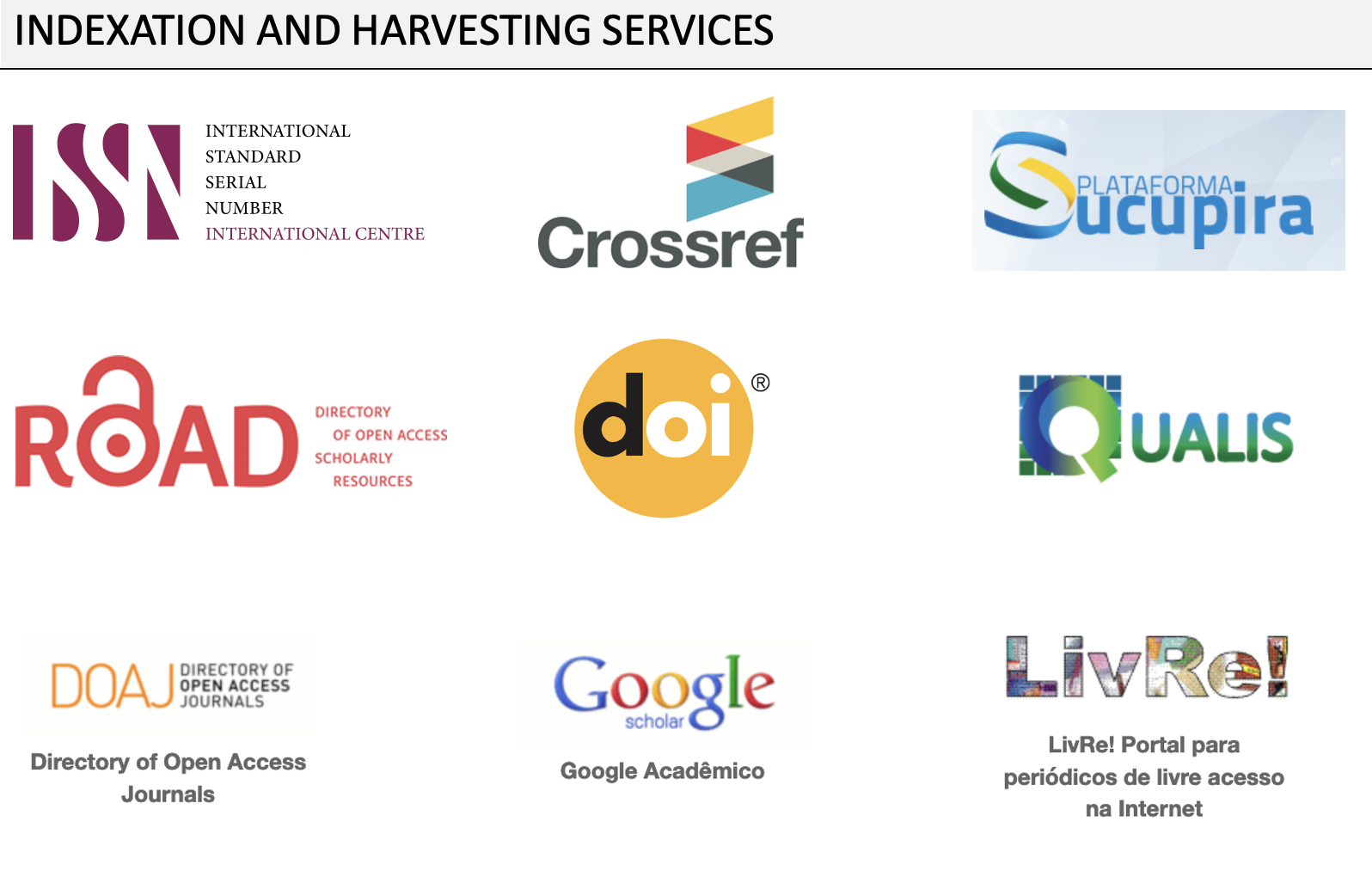Counterhegemonic Narratives of Innovation: Political Discourse Analysis of Iberoamerican Countries
DOI:
https://doi.org/10.5380/nocsi.v0i1.91161Keywords:
Science, Technology and Innovation, Discourse analysis, Political discourse, Iberoamerica, National PlansAbstract
From the 1970s onwards, changes in economic theory began to draw attention to the relationship between economic growth and technological innovation. Technological innovation has come to be considered fundamental to boosting international trade, increasing productivity and generating more and better jobs, among other benefits. However, more recent academic narratives began to change through considering the importance of technological innovation for social purposes such as social inclusion and sustainable development. This recovered the concept of social innovation and alongside the development of a plethora of alternative innovation concepts – such as sustainable innovation, open innovation, responsible innovation, green innovation, among other “x-innovation” concepts (Gaglio et al. 2017). Nevertheless, little is known about the extent to which these counterhegemonic concepts emerge and feature in Science, Technology, and Innovation (STI) policy discourses. In this sense, this article aims to understand the use of “x-innovation” concepts and the role attributed to innovation for (allegedly) counterhegemonic purposes in the STI national policies of Iberoamerican countries within the framework of disclosing the specificity of this discourse.
References
Altenburg, T. (2009). Building inclusive innovation systems in developing countries: challenges for IS research. In B.-A. Lundvall, K. J. Joseph, C. Chaminade & J. Vang (Eds.), Handbook of innovation systems and developing countries: building domestic capabilities in a global setting (p. 33-56). Cheltenham: Edward Elgar.
Bardin, L. (2016). Análise de conteúdo. São Paulo: Edições 70.
Boons, F., & Lüdeke-Freund, F. (2013). Business Models for Sustainable Innovation: State of the Art and Steps Towards a Research Agenda. Journal of Cleaner Production, 45, 9-19.
Cajaiba-Santana, G. (2014). Social innovation: Moving the field forward. A conceptual framework. Technological Forecasting & Social Change, 82, 42-51.
Carrillo-Hermosilla, J., Del Río, P., & Könnölä, T. (2009). Eco-Innovation. When Sustainability and Competitiveness Shake Hands. Palgrave Macmillan.
Carrillo-Hermosilla, J., Del Río, P., & Könnölä, T. (2010). Diversity of eco-innovations: Reflections from selected case studies. Journal of cleaner Production 18, 1073-1083.
Chesbrough, H. (2003). Open Innovation: The New Imperative for Creating and Profiting from Technology. Boston, Mass.: Harvard Business School Press.
Colciencias (2018). Libro Verde 2030. Política Nacional de Ciencia e Innovación para el Desarrollo Sostenible. Bogotá: Departamento Administrativo de Ciencia, Tecnología e Innovación (Colciencias).
Coutinho, C. N. (2006). Intervenções: o marxismo na batalha das idéias. São Paulo: Cortez.
Coutinho, C. N. (2007). Gramsci: um estudo sobre seu pensamento político. Rio de Janeiro: Civilização Brasileira.
Coutinho, E. G. (2008). Processos contra-hegemônicos na imprensa carioca, 1889/1930. In E. G. Coutinho (Ed.), Comunicação e contra-hegemonia: processos culturais e comunicacionais de contestação, pressão e resistência (p. 65-89). Rio de Janeiro: Editora UFRJ.
Drucker, P. F. (1985). Innovation and Entrepreneurship: Practice and Principles. Harper & Row, Publishers, Inc.
Dye, T. R. (2013). Understanding public policy. 14th ed. New York: Pearson Education.
Eagleton, T. (1991). Ideology: an introduction. London / New York: Verso.
Edwards-Schachter, M. (2018). The nature and variety of innovation. International Journal of Innovation Studies, 2, 65-79.
Edwards-Schachter, M., & Wallace, M. L. (2015). ‘Shaken, but not stirred’: six decades defining social innovation. INGENIO (CSIC‐UPV) Working Paper Series no. 2015-04. Paper published in Technological Forecasting and Social Change 119, 2017, 64-79.
European Commission (2017). New Horizons: Future Scenarios for Research & Innovation Policies in Europe. A report from project BOHEMIA – Beyond the Horizon: Foresight in Support of the Preparation of the European Union’s Future Policies in Research and Innovation. Brussels: European Commission, Directorate-General for Research and Innovation.
Fagerberg, J. (1996). Technology and competitiveness. Oxford Review of Economic Policy, 12 (3), 39-51.
Fausto, B., & Devoto, F. J. (2004). Brasil e Argentina. Um Ensaio de História Comparada (1850-2002). São Paulo: Editora 34.
FECYT (2011). Agenda ciudadana de Ciencia e Innovación. Madrid: Fundación Española para la Ciencia y la Tecnología e Ministerio de Ciencia e Innovación.
Fischer, F., & Gottweis, H. Eds. (2012). The Argumentative Turn Revisited. Public Policy as Communicative Practice. Duke University Press.
Freeman, C., & Soete, L. (2008). A economia da inovação industrial. Campinas: Editora da Unicamp.
Gaglio, G., Godin, B., & Pfotenhauer, S. (2017). X-Innovation: Re-Inventing Innovation Again and Again, Project on the Intellectual History of Innovation. INRS: Montreal.
Garcia, A., Jaumandreu, J., & Rodrigues, C. (2002). Innovation and jobs: evidence from manufacturing firms. MPRA Paper, no. 1204.
GMI (2010). Plan Estratégico Nacional de Ciencia, Tecnologia e Innovacion – PENCTI. Montevideo: Gabinete Ministerial de la Innovación.
Godin, B. (2008). Innovation: the History of a Category, Working Paper no. 1, Project on the Intellectual History of Innovation. Montreal: INRS
Godin, B. (2012). Social Innovation: Utopias of Innovation from c. 1830 to the Present. Working Paper no. 11, Project on the Intellectual History of Innovation. Montreal: INRS. 50 p.
Godin, B. (2015). Innovation Contested – The Idea of Innovation Over the Centuries. London: Routledge.
Godin, B., & Gaglio, G. (Forthcoming B). Why Innovation Sustains ‘Sustainable Innovation. In F. Boons & A. McMeekin (Eds.), Handbook on Sustainable Innovation. Edward Elgar.
Godin, Benoît (Forthcoming A). Innovation Languages, Discourses and Ideology: A Historical Perspective. Project on the Intellectual History of Innovation.
Golovatchev, J., Budde, O., & Kellmereit, D. (2010). Technology and Innovation Radars: effective instruments for the Development of a Sustainable Innovation Strategy and Successful Product Launches. International Journal of Innovation and Technology Management, 7(3), 1-7.
Gramsci, A. (1971). Selections from the Prison Notebooks of Antonio Gramsci, translated by G. N. Smith & Q. Hoare. New York: International Publishers.
Guth, M. (2005). Innovation, social inclusion and coherent regional development: a new diamond for a socially inclusive innovation policy in regions. European Planning Studies, 13(2), 333-349.
Harrison, R., Jaumandreu, J., Mairesse, J., & Peters, B. (2006). Does innovation stimulate employment? A firm-level analysis using comparable micro data from four European countries. MPRA Paper no. 1245.
Heeks, R., Amalia, M., Kintu, R., & Shah, N. (2013). Inclusive Innovation: Definition, Conceptualisation and Future Research Priorities. Development Informatics Working Paper Series. http://www.seed.manchester.ac.uk/subjects/idpm/research/publications/wp/di/
Howaldt, J., Butzin, A., Domanski, D., & Kaletka, C. (2014). Theoretical Approaches to Social Innovation - A Critical Literature Review. A deliverable of the project: ‘Social Innovation: Driving Force of Social Change’ (SI-DRIVE). Dortmund: Sozialforschungsstelle.
Konder, L. (2002). A questão da ideologia. São Paulo: Cia das Letras.
Krugman, P. (1990). Rethinking international trade. Cambridge: The MIT Press.
Lall, S. (2000). Export performance, technological upgrading and foreign direct investment strategies in the Asian newly industrializing economies, CEPAL-SERIE Desarrollo productive, 88, 69 p.
Lundvall, B.-A., & Borràs, S. (2004). Science, Technology, and Innovation Policy. In J. Fagerberg & D. C. Mowery (Eds.), The Oxford Handbook of Innovation (p. 599-631). Oslo, Berkeley and New York: Oxford University Press.
Machlup, F. (1974). Essays in Economic Semantics, ed. Merton H. Miller. New York: W.W. Norton & Company.
Majone, G. (1989). Evidence, Argument & Persuasion in the Policy Process. New Haven/London: Yale University Press.
MCTES (2006). Um Compromisso com a Ciência para o Futuro de Portugal. Vencer o atraso científico e tecnológico. Lisbon: Ministério da Ciência, Tecnologia e Ensino Superior.
MCTES (2018). Higher Education, Research and Innovation in Portugal: Perspectives for 2030. Lisbon: Ministério da Ciência, Tecnologia e Ensino Superior.
MCTIC (2016). Estratégia Nacional de Ciência, Tecnologia e Inovação 2016-2022 – Ciência, Tecnologia e Inovação para o Desenvolvimento Econômico e Social. Brasília: Ministério da Ciência, Tecnologia, Inovações e Comunicações.
MCTIP (2012). Argentina Innovadora 2020. Plan Nacional de Ciencia, Tecnología e Innovación. Lineamentos estratégicos 2012-2015. Buenos Aires: Ministerio de Ciencia, Tecnología e Innovación Productiva.
Meadows, D. H., Meadows, D. L., Randers, J., & Behrens III, W. W. (1972). The Limits to Growth: A Report for the Club of Rome’s Project on the Predicament of Mankind. New York: Universe Books.
MEyC (2012). Estrategia Española de Ciencia y Tecnología y de Innovación 2013-2020. Madrid: Ministerio de Economia y Competitividad.
Nelson, R. R. (2005). Uma teoria evolucionária da mudança econômica. Campinas: Editora da Unicamp.
Nelson, R. R. (2006). As fontes do crescimento econômico. Campinas: Editora da Unicamp.
OECD (2016). Science, Technology and Innovation Outlook 2016. Megatrends affecting science, technology and innovation. OECD: Paris.
Owen, R., Macnaghten, P., & Stilgoe, J. (2012). Responsible Research and Innovation: From Science in Society to Science for Society, with Society. Science and Public Policy, 39(6), 751-760.
Penrose, E. (2006). A teoria do crescimento da firma. Campinas: Editora da Unicamp.
Pisani, J. A. Du (2006). Sustainable development – historical roots of the concept. Environmental Sciences, 3(2), 83-9.
Pol, E., & Ville, S. (2009). Social innovation: Buzz word or enduring term? The Journal of Socio-Economics, 38, 878-885.
RICYT (2018). Indicadores de Insumo. Red de Indicadores de Ciencia y Tecnología Iberoamericana e Interamericana. http://www.ricyt.org/indicadores
Souza, H. G. de (2013). Contra-hegemonia: um conceito de Gramsci? Master Thesis. Belo Horizente: UFMG. http://www.bibliotecadigital.ufmg.br/dspace/handle/1843/BUOS-9QBFMY
Stilgoe, J., Owen, R., & Macnaghten, P. (2013). Developing a Framework for Responsible Innovation. Research Policy, 42, 1568-1580.
Stone, D. (1989). Causal Stories and the Formation of Public Agenda. Political Science Quaterly, 104(2), 281-300.
von Hippel, E. (2005). Democratizing Innovation. London: MIT Press.
WCED – World Commission on Environment and Development (1987). Our common future, Oxford: Oxford University Press.
Williams, R. (1977). Marxism and Literature. Oxford University Press: Oxford.
World Bank (2010). Innovation Policy. A Guide for Developing Countries. Washington, DC: World Bank.
Downloads
Published
How to Cite
Issue
Section
License
Copyright (c) 2023 Carolina Bagattolli, Tiago Brandão

This work is licensed under a Creative Commons Attribution-NonCommercial-ShareAlike 4.0 International License.
NOvation is an open-access journal under a Creative Commons – CC Attribution-NonCommercial-ShareAlike 4.0 license, which allows others to share the work with an acknowledgement (and preservation) of the author's authorship and intellectual property rights.
To this extent, the authors who publish in this journal agree with the following terms:
1. Authors retain the rights and grant the journal the right of first publication, with the work published under the Creative Commons – CC Attribution-NonCommercial-ShareAlike 4.0 that allows [...].
2. Authors have authorization for distribution, of the version of the work published in this journal, in an institutional repository, thematic, databases and in other works as a book chapter, with acknowledgement of authorship and initial publication in the journal;
3. Papers published in this journal will be indexed in databases, repositories, portals, directories and other sources in which the journal is and will be indexed.
Ethical Responsibilities of Authors
This journal is committed to upholding the integrity of the scientific record.
Consent to submit has been received explicitly from all co-authors, as well as from the responsible authorities – tacitly or explicitly – at the institute/organization where the work has been carried out, before the work is submitted.





